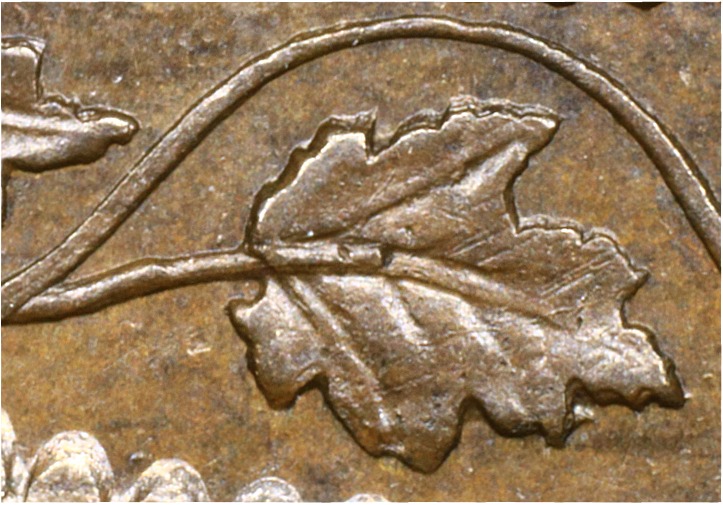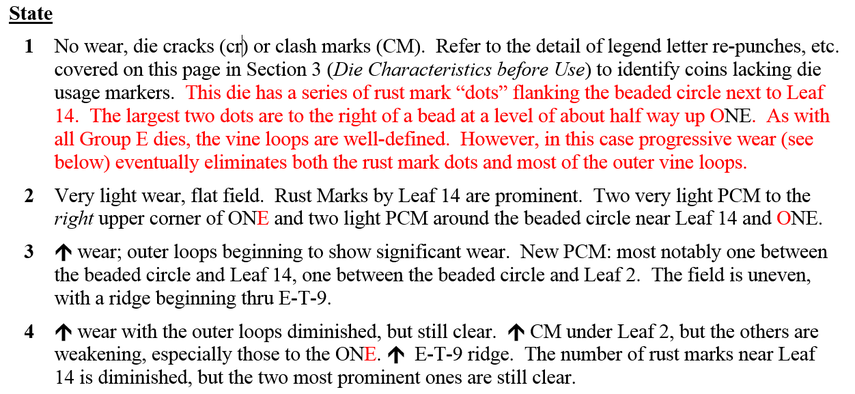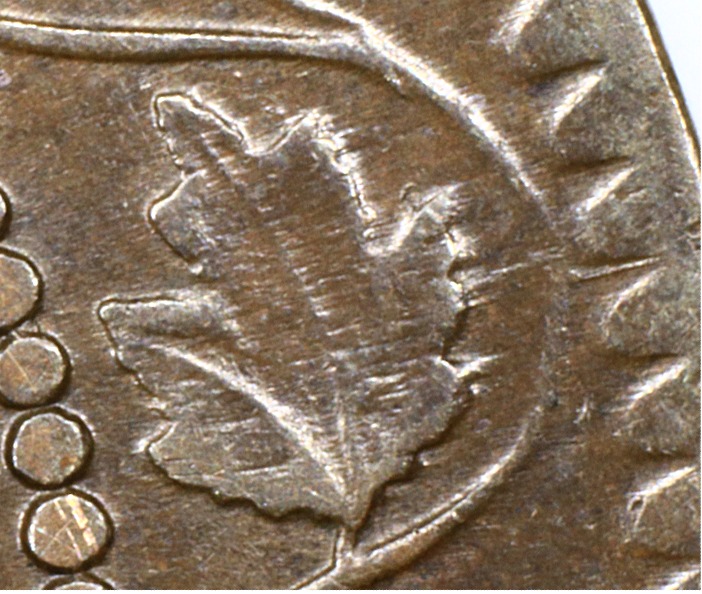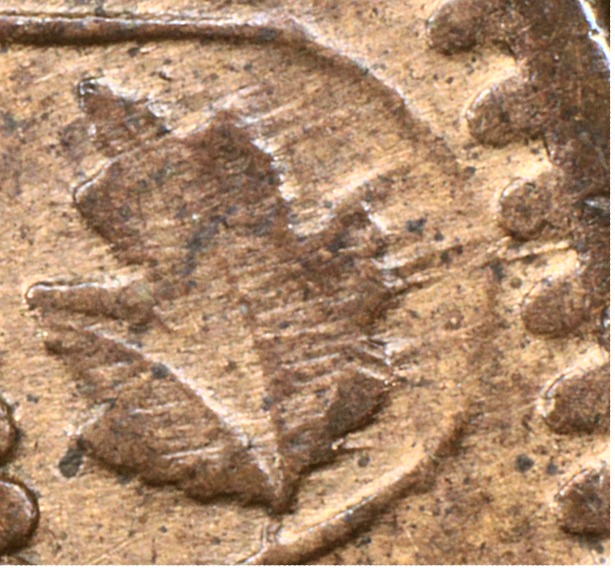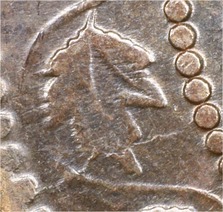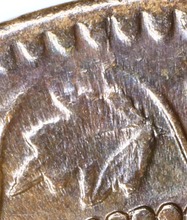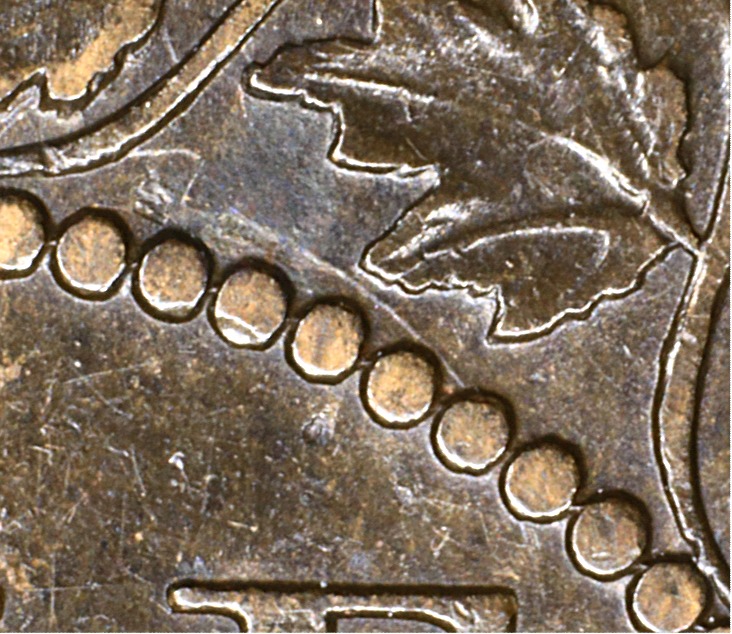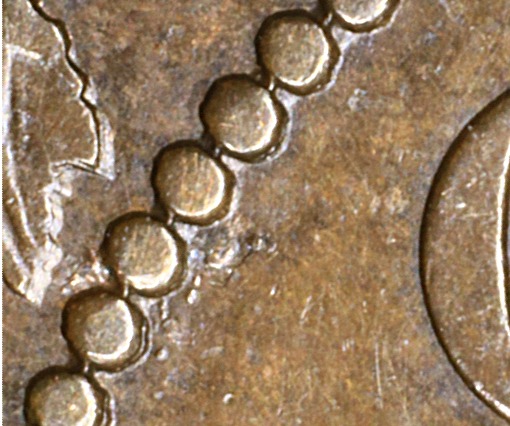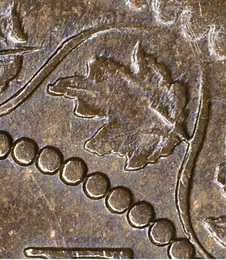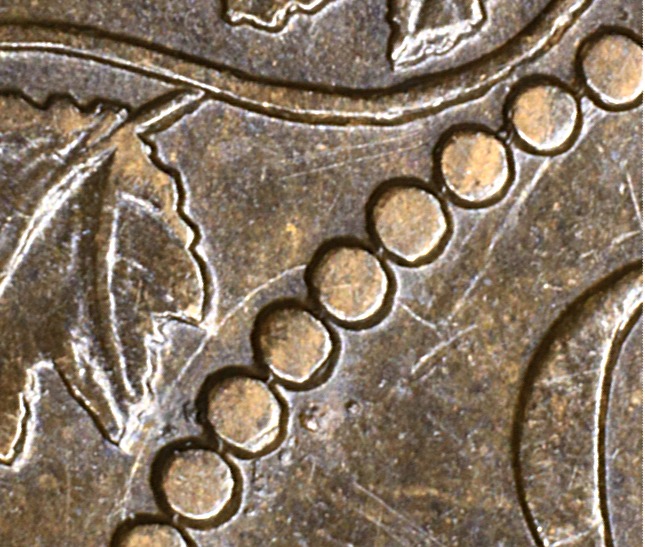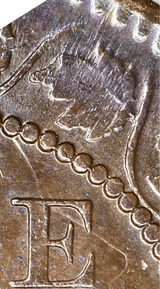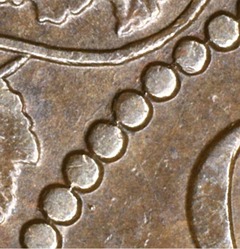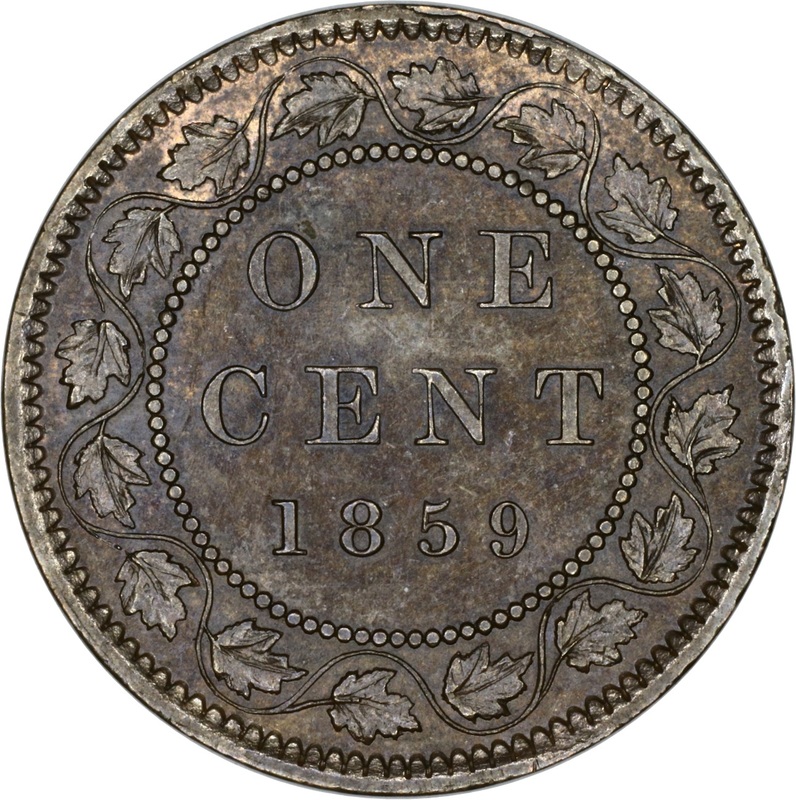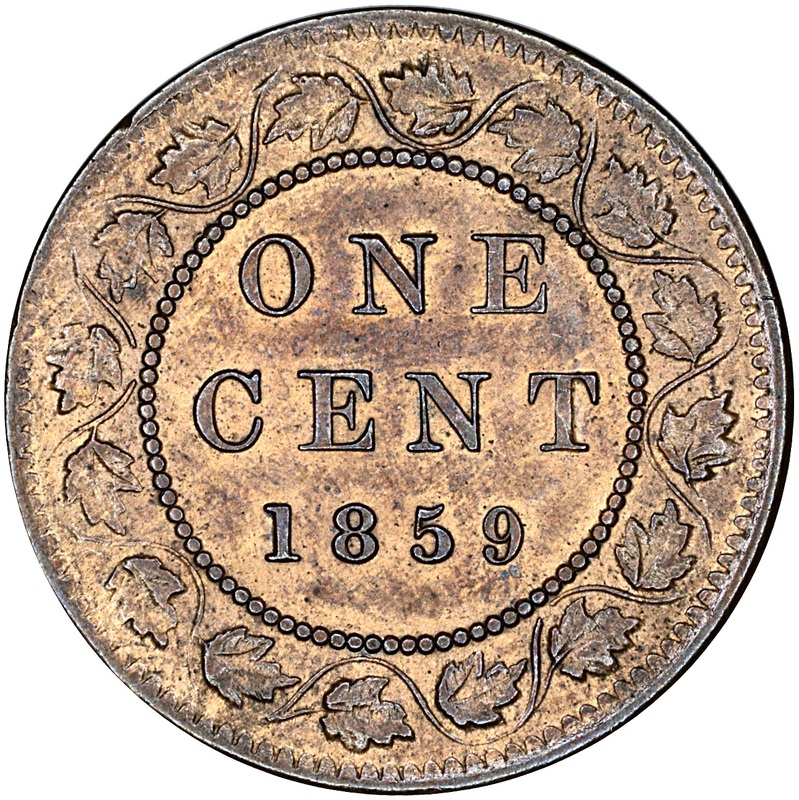REVERSE E10
1. Catalog Information |
1a. Haxby Catalog Number(s) Associated with this Reverse
1b. Known Die State Combinations Involving this Reverse
|
8-1 + E10-1
8-1 + E10-2 8-2 + E10-3 8-3 + E10-4 |
8a-1 + E10-4/5 *
8a-2 + E10-5 8a-3 + E10-6 8a-4 + E10-7 8a-5 + E10-8 |
* Indicates a likely die state not yet seen. Slash (/) indicates either or both die states are possible.
2. Die Specific Comments |
|
Judging by the amount of wear this die underwent prior to its retirement, one can only conclude that it must have had a very high output, multiples of the average for dies in this period. The fact that E10 ultimately reached a state where several of the outer vine loops wore through can make identifying it very challenging. It is important to bear in mind that while some Reverse Groups display a break in Loop 2 (that had been passed on to them by the broken reverse punch), dies in those groups don't simultaneously have other broken vine loops. So, the broken vine loops on coins from late states of E10 are caused by die wear, not breaks in the design on the reverse punch. The late states of this die were formerly considered a separate die, E21, which has now become a reserve number.
|
3. Die Characteristics before use
3a. Summary of Repunched Date and Letters for Reverse E10
E10 - Date
3b. Appearance of Critical Stems and Leaves
4. Die Changes in Use
4a. Summary of Die Cracks & Collapses for Reverse E10 How to use this table
No significant die collapses on this reverse.
Comments on Die States
4b. Die Clash and Rust Mark Photos
4c. Miscellaneous Features
None seen.


